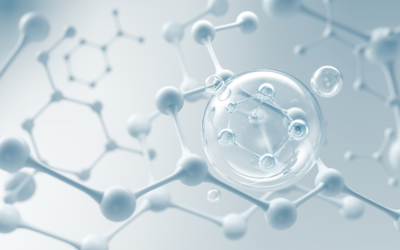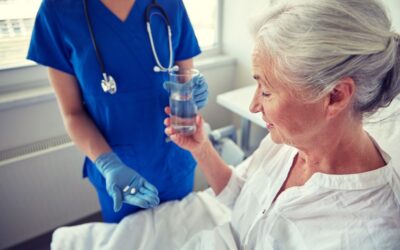
What is Cleaning Validation?
Cleaning Validation is a procedure for verifying the state of cleanliness of a facility and equipment so that product contamination does not occur. This validation procedure must be properly documented to demonstrate that Good Manufacturing Practices (GMP) for finished pharmaceutical products have been properly performed.
Types of contamination can be divided into three main macrocategories:
- Physical: external foreign elements (hair, residues, etc.);
- Chemical: product residues from previous processing;
- Biological: presence of fungi, bacteria, endotoxins etc.
Cleaning Validation follows three main stages:
- Protocol: descriptive and accurate collection of equipment, cleaning procedures, sampling points and techniques, products used for washing, cleaning procedure implemented;
- Detection and analysis: checks on production batches through microbiological analysis;
- Report: verification of compliance based on the results collected in the previous steps.
Regarding Cleaning Validation, all major Regulators and International Organizations operating in the health and pharmaceutical fields have expressed their views. Below are the guidelines from three of the major international organizations that have been dealing with the issue.
Cleaning Validation: guidelines from leading regulators and organizations
USFDA – United States Food and Drug Administration
Within Title 21 of the CFR (Code of Federal Regulation) updated 10/26/2022, FDA defines its guidelines related to Cleaning Validation in summary as follows:
“Equipment and utensils must be cleaned, maintained, and, depending on the nature of the drug, sanitized and/or sterilized at appropriate intervals to prevent malfunction or contamination that would alter the safety, identity, strength, quality, or purity of the drug produced beyond official requirements or stability.”
In addition,
“Procedures shall be established and followed for the cleaning and maintenance of equipment, including tools, used in the manufacture, processing, packaging or holding of a drug product.”
And finally,
“Maintenance, cleaning, sanitation, and inspection records must be maintained.”
In addition to Title 21, FDA has issued other industry guidance documents on:
- Acceptable residue;
- Total organic carbon;
- Rinse sampling;
- Ongoing process verification.
Full details on these can be found on this page: https://www.accessdata.fda.gov/scripts/cdrh/cfdocs/cfcfr/CFRSearch.cfm?CFRPart=211
Within Title 21, noteworthy is Section 211.68 regarding automatic, mechanical and electronic equipment. The Code of Federal Regulations states, in fact, that:
“Automatic, mechanical, or electronic equipment or other types of equipment, including computers or related systems that will perform a function satisfactorily, may be used in the manufacture, processing, packaging, and warehousing of a pharmaceutical product. If such equipment is used in this manner, it must be regularly calibrated, inspected or verified according to a program designed to ensure adequate performance. Written records of such calibration checks and inspections shall be maintained.”
For more information please visit the following link: https://www.accessdata.fda.gov/scripts/cdrh/cfdocs/cfcfr/CFRSearch.cfm?fr=211.68
What is clear from Title 21 of the U.S. Code of Federal Regulations is the strong clear invitation to use, in the manufacture and storage of pharmaceutical products, technological equipment, designed to the highest standards and conforming to the guidelines, to be coupled with organized and standardized procedures to prevent the presence of residues and bacteria within ready-to-market pharmaceutical products. For the FDA, therefore, validation of cleaning procedures and verification based on scientific facts play a decisive role in preventing cross-contamination.
EMA – European Medicines Agency
EMA is leading the way in establishing guidelines on Cleaning Validation. The EMA, within the “Guidelines for the Establishment of Health-Based Exposure Limits for the Identification of Risks in the Production of Various Medicinal Products in Shared Facilities” – in force since June 2015, has made it mandatory to establish health-based exposure limits (HBELs) for all pharmaceuticals, based on the permitted daily exposure values.
Therefore the establishment of the guidelines was followed by EMA’s publication in 2019 of a comprehensive section of 14 specific questions and answers on the topic including:
- Should companies establish Health Based Exposure Limits (HBELs) for all products?
- Which products/APIs are considered most at risk?
- Can the calculation of HBELs be based only on clinical data?
- How are limits established for cleaning purposes?
- Is it acceptable to store high-risk products in dedicated areas to control the risks of cross contamination?
The message from EMA is clear: “HBELs must be established for all medicines. Toxicological or pharmacological data, on which the calculation of HBELs is based, require periodic reassessment throughout the life cycle of a product.”
To view the full guideline document, please visit this link: https://www.ema.europa.eu/en/documents/scientific-guideline/guideline-setting-health-based-exposure-limits-use-risk-identification-manufacture-different_en.pdf
If, on the other hand, you would like to learn more about the document published by EMA with Q&As, click here: https://www.ema.europa.eu/en/documents/other/questions-answers-implementation-risk-based-prevention-cross-contamination-production-guideline_en.pdf
WHO – World Health Organization
WHO’s Cleaning Validation guidelines are similar to those of the FDA.
Within WHO’s “Technical Report Series 1019 of 2019,” Annex 3 is devoted entirely to good manufacturing practices and validation guidelines. WHO specifies that “Validation is an essential part of good practices, including good manufacturing practices (GMPs) and good clinical practices (GCPs)” and specifies that validation should be applied throughout the entire life cycle of; a product, process, method, system or equipment.
To read the full annex, please click here: https://www.who.int/docs/default-source/medicines/norms-and-standards/guidelines/production/trs1019-annex3-gmp-validation.pdf
The WHO, in any case, defines the document only as a general guidance and with useful principles for their application in the production control of raw materials of finished pharmaceutical products. Regarding qualification, validation of specific products, methods, processes and systems, the WHO refers to more detailed approaches such as EMA’s HBELs: the current preferred guideline for major regulators and currently the best way forward in terms of completeness and scientific approach used.
The proactive role of LAST Technology
LAST Technology cares about everyone’s health, which is why it is investing in research and developing new technologies to enhance its range of machinery for the pharmaceutical industry.
The Pharma division of LAST Technology was created to provide the Pharmaceutical industry with washing, disinfection, sterilization, depyrogenation, decontamination and drying machinery of the highest quality standards that allow it to better manage the processes and Cleaning Validation phases required by the most important health and pharmaceutical safety bodies.
Choosing LAST Technology machinery means having the guarantee, at each production stage, to comply with current disinfection and sterilization standards, in order to obtain production batches in the pharmaceutical field that comply with current international legislative requirements.
If you are interested in more information, please contact us


